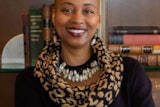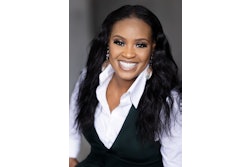Not many people in America can make this claim: I knew Dr. Martin Luther King Jr., personally.
Clarence B. Jones can. Jones not only knew King, he was a close adviser to the distinguished civil rights leader.
Putting his first-hand knowledge of American segregation and the Civil Rights movement to use, the former speechwriter and legal counsel to King will teach 40 undergraduate students at the University of San Francisco this fall as the school’s first diversity scholar.
Students enrolled in the 15-week course titled “From Slavery to Obama” will focus on the beginning and ending of slavery, the segregation era, King and other civil rights events. The class, which began last Thursday, will also feature discussions on 49th anniversary of the March on Washington taking place this Tuesday. Jones assisted King to draft the infamous “I Have a Dream” speech delivered in the nation’s capital. Jones was one of King’s closest advisers.
For nearly five decades, Jones has been involved in civil rights events and received numerous achievements that include helping to outline King’s 1963 “Letter from Birmingham Jail” after King was arrested for non-violently protesting the city’s segregated businesses; aiding in negotiations to end the 1971 Attica Prison riot in New York where 39 people died; and guest of honor in 2008 by the mayor of Paris, France, in naming a public park after King.
Jones is the co-author of two books highlighting behind-the-scenes details about King and the civil rights movement: What Would Martin Say? and Behind the Dream: The Making of a Speech that Transformed a Nation.
Jones, 81, currently serves as an author and scholar-in-residence at Stanford University’s Martin Luther King Jr. Research and Education Institute.
Jones spoke to Diverse last week regarding his new class at USF, President Obama and knowing King.
DI: Where did the title of the class “From Slavery to Obama” come from?
CJ: “The class was originally conceived for graduate students at Stanford University for students who were getting a master’s degree in liberal arts. Then I was asked to redesign and reconfigure the course for undergraduates at the University of San Francisco. The purpose of this [class] is that you cannot understand ourselves as a nation, especially an African-American being the 44th president, and not understand the relationship between Black people and White people. The most misunderstood question that is the least comfortable is the question of race in America. So I wanted to design a course that will clinically look at slavery as an institution; clinically look at abolishing slavery and how it shaped from generation to generation.
DI: You picked a specific collection of books for students to read such as Black Reconstruction in America, by W.E.B. DuBois; The Fire Next Time, by James Baldwin; and Between Barack and a Hard Pace: Racism and White Denial in the Age of Obama, by Tim Wise. Why those books and what is the main idea in choosing them?
CJ: The books are from African-American scholars and those who are White scholars. The books focus on getting an insight and understanding of what the institution of slavery was and not a romantic version. It also focuses on the effect of that institution from both the master and the slaves. It also focuses on the efforts of the country to get rid of this institution and the fact that it took the only and first civil war in our country that took more than 600,000 young men to try and resolve [slavery].
DI: In regards to President Obama being America’s first Black president, what progress have you seen?
CJ: There was a single act of progress when he was first elected. That was a seminal act of progress right there. The election of Barack Obama is something Dr. King said early on, “As a general proposition, the average person in America is not an evil person. It is a question of their reconciling of beliefs in basic human decency and basic elementary democratic principles.” I am not surprised that America has that capacity to vote for an African-American as president. There was such a reservoir of good will that people gave him an opportunity.
DI: Given that you knew Dr. Martin Luther King Jr., what was he like as a civil rights leader and as a person?
CJ: First of all, Dr. King wanted to be known not as a civil rights leader, but as a minister of the gospel. The doctor in his name came from his studies in theology. He was concerned about civil rights. He was at a crossroads in history and saw what the conscience of America required better than any other person White or Black. I am sometimes asked the question and I’ve said this over and over again. When people ask me, “Who today is [similar to] Dr. Martin Luther King Jr?” I ask them this, “Who today is like Michelangelo? Beethoven? Mozart? No one.” If you were fortunate enough to be alive April 4, 1968 [month, day and year he died] and you looked up at the sky and you saw a shooting star, it was the brightest star that you ever saw in the heavens. What you saw was Martin Luther King Jr. We will never see that shooting star again.
DI: What are some lighthearted moments you shared with Dr. King?
CJ: We had plenty of lighthearted moments. Because I was raised in foster care, he reminded parties of my former upbringing. Martin would say, “If you turn your back, he would snatch that chicken right off your plate.” I would! I love dark meat. Martin would sit next to me and if he had chicken, I would eat. Martin would joke about me saying, “He can’t be deprived because he is coming in all these custom-made suits with cufflinks.” He did that to keep me on my toes.
The other humorous thing is my wife [Anne] at the time, she is now deceased. He would call her and they would have a lot of independent conversations. She got the courage to speak with Dr. King. She asked him, “You are in the business of saving souls. Do you think there is any hope for Clarence?” He said, “Anne, he may be beyond redemption. I am going to pray for you, Anne.” He used to crack up when he said that. Those were some fun moments.















